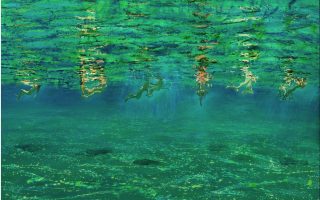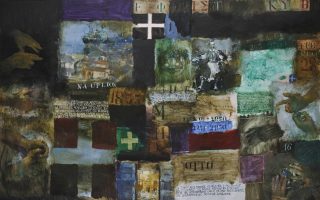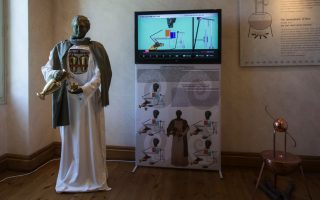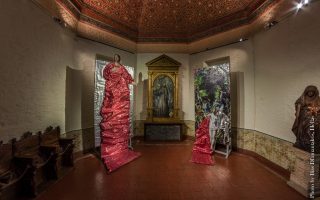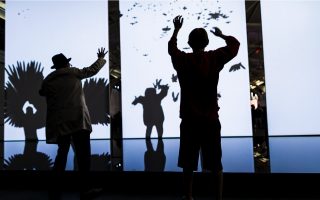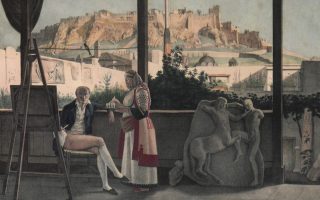Artist shines a light on the survivors of the Holocaust
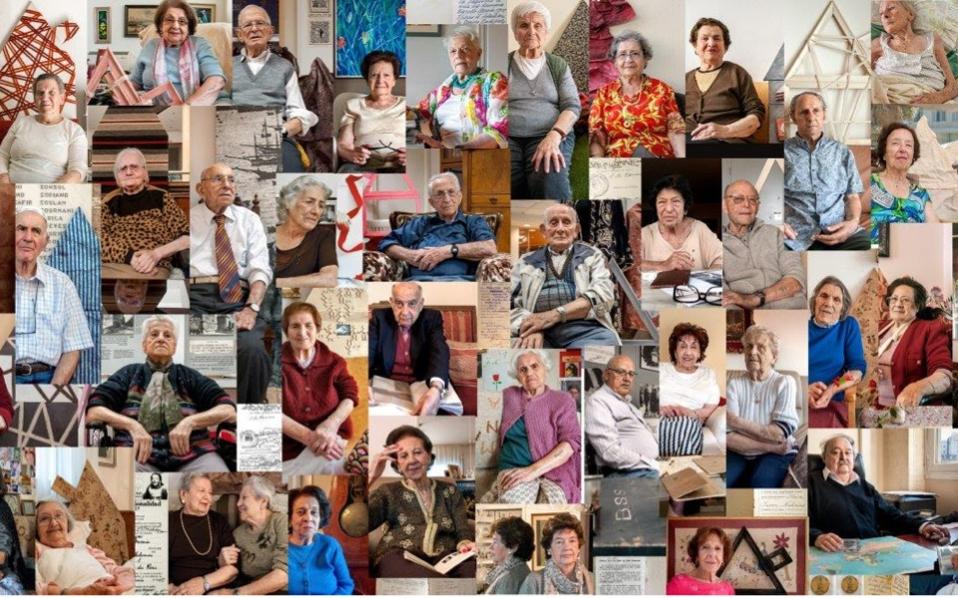
The Cervantes Institute in central Athens is hosting an exhibition of photographs by Artemis Alcalay titled “Greek-Jewish Holocaust Survivors: A Visual Narrative.” The display comprises 44 portraits of Greeks who managed to endure the hell that was the Auschwitz and Bergen-Belsen concentration camps in World War II, some of whom are photographed with creations by the artist related to their particular stories.
Tying the survivors’ stories to her work is not an expression of narcissism on Alcalay’s part, but rather a self-reference, as the artist grew up in a family that experienced persecution and loss, prompting her to approach her own history through the healing prism of art.
“The truth is that I started photographing members of my own family who got away. But when they died a few years ago, I thought I would focus on other people who managed to make the return journey. What gave my mission urgency was that some of them were very advanced in years. Now, three years after starting the project, six have already died,” says Alcalay, who comes from a Jewish family in Ioannina, northwestern Greece.
The artist traveled all over Greece and elsewhere to track down Greek-Jewish survivors. Each had a soul-shattering story to tell.
“I try not to distinguish one from the other. In any case, all of them are defined by small miracles, of how these people who went through hell managed to come out alive,” says Alcalay. “Matika Azaria was sent to Auschwitz with her sister. They were held in separate cells. When Matika learned that her sister would be sent to the gas chamber, she decided to say goodbye. Risking her own life, she snuck out of the cell one night and was arrested. She told the guards why she had broken the rules. She talked about her sister and she was eventually saved.”
The Cervantes Institute was not a random choice of venue, as the exhibition also includes portraits of Sephardic Jews, now Spanish nationals, from Thessaloniki and Athens who were saved thanks to the efforts of the Spanish consul in Greece, Sebastian Romero Radigales.
Radigales risked his career to save them from certain death in the Nazi camps by issuing them new passports and pushing for their safe transfer from the Bergen-Belsen camp to Spain.
The exhibition is complemented by photographs of documents such as citizenship papers, letters, passports and books written by the survivors.
“The most impressive thing about the survivors is not just that they lived to a ripe old age but also that most of them have managed to have many children. Maybe it was the natural reaction to losing so many of their loved ones. They tried to leave the trauma in the past and move forward with love,” says Alcalay.
Cervantes Institute, 23 Mitropoleos, tel 210.363.4117, www.atenas.cervantes.es. The exhibition runs to the end of March.
